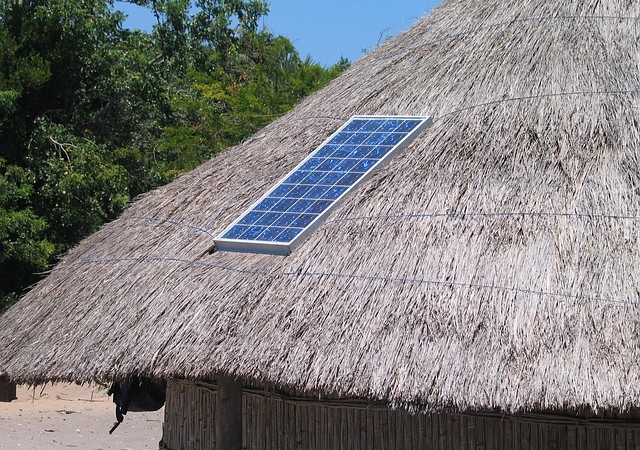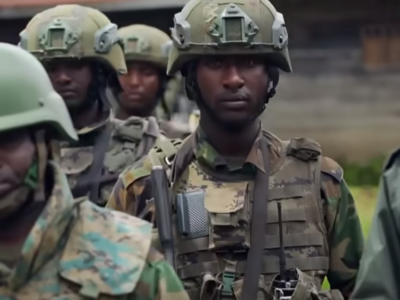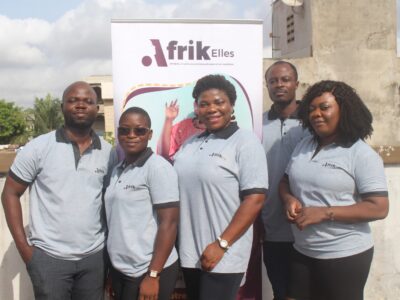This summer, the World Bank announced that it will allocate $5 billion in aid to Africa to help the continent optimize its potential for electricity production. The initiative focuses on hydroelectric power, among other sources. Although its regional economies are expanding rapidly, Africa still suffers from significant deficiencies in electrification, a factor which hinders development.
There is a plethora of initiatives both private and public aiming to increase access to electricity, but the scale of the task at hands is daunting. Fifteen percent of the world's population lives on the African continent, yet they represent only 3 percent of global electricity consumption. The lack of resources, as well as nonexistent infrastructure, means that public and private organizations must now unite to empower Africa and to consolidate development efforts. For instance, Électricité de France (EDF), the French public national power company, is currently conducting multiple electrification projects on the continent.
Less than 10 percent of the inhabitants of rural sub-Saharan Africa have access to electricity
Africa today is a continent full of promise and rich in natural resources, a young continent still in the process of development. It is also the land which has, rather poetically, been referred to as “a society in eternal darkness”, due to the scarcity of electricity across most of its nations. Nearly 600 million people are without electricity in 2014. The electrification rate across the African continent is about 42 percent.
Although this figure is one of the lowest amongst all emerging nations, if not the lowest, it is also subject to pronounced regional disparities. While 99 percent of the Maghreb has electricity, the rate is only 31 percent in sub-Saharan Africa. There is furthermore a matter of inequality due to the divide which separates urban zones from rural zones. Sixty-nine percent of cities are electrified, but the African countryside must still make do with a rate of about 25 percent. For this reason, less than 10 percent of the population of rural sub-Saharan zones enjoy the benefits of electricity.
These figures reflect the lack of resources of a continent struggling to simultaneously attract investment and maintain national companies dedicated to the provision of electricity. In the search for profitability, investors are confronted with a population in which 70 percent of the people live on less than $2 per day, and with revenues that are not able to cover the expenditures required for even minimal electricity consumption. In addition, electric utilities must operate heavy and aging installations, with which they are not entitled to make money by focusing only on the retail segment. Given this lack of capital, NGOs and public and private groups from the international community are engaging in electrification projects, that today still take on the appearance of development aid.
Making great progress with solar energy
The under-electrification of Africa is an issue that involves actors from around the world, focusing particularly on solar energy, because of the exceptional amount of sunshine enjoyed by the continent. Thus, Mozambique was awarded a $35 billion loan from South Korea four years ago. This provision was intended to fund the construction of three solar power plants, and to permit the country to consolidate its power capacity. Meanwhile, French telecom group Orange embarked on a venture through which 1,300 antennas were installed, scattered across rural areas, with the aim of enabling people to recharge their cellular phones.
When considering the deployment of electricity in Africa, which is mostly in sub-Saharan areas, emphasis is often placed on renewable energy to better meet the needs of Africa while optimizing natural resources. Thus, 30 American investors announced in early June of this year their intention to fund the development of solar power plants and hydroelectric power plants in this part of the continent, to the tune of one billion dollars. These funds, over five years, will also be used to train African experts in the energy field, and to collect money to support local electricity providers. Ernest Moniz, Secretary of Energy of the United States, has stated:
Access to centralized networks of electricity is not a comprehensive solution for these countries located on one of the least urbanized continents […] But with solutions including off-grid and small-scale projects, we can bring electricity to the rural areas.
EDF, Schneider Electric, French industrials investing in rural areas
EDF recently joined the International Finance Corporation (a subsidiary of the World Bank), to intervene in sub-Saharan African rural areas, with the goal of connecting 500,000 people living in these areas to power grids. The French group, led by Henri Proglio, will proceed with the implementation of off-grid electrification, which is less expensive and has the advantage of being more self-sufficient. Currently, a test phase was launched in Benin, with the ambition to connect 25,000 people, using a hybrid diesel-solar grid, along with power stations delivering bioenergy. For Edward Dahomé, EDF Director for Africa and Energy Access, electricity is:
Un produit vital sans lequel aucun vrai développement n’est possible. L’accès à l’énergie des populations rurales, souvent les plus défavorisées, permet de réduire la pauvreté en développant les activités génératrices de revenus, mais aussi l’éducation, la santé, l’accès à l’eau etc.
a vital product, without which no true development is possible. Access to energy for the poorest rural populations often reduces poverty by developing income-generating activities, and also education, health, access to water, etc.
The electrical power group is undertaking more and more projects, such that the greatest number of nations may benefit from its practical knowledge. In Botswana, EDF was selected by the national electrical utility, Botswana Power Corporation, to realize its program for decentralized rural electrification. In Mali, in conjunction with ADEME, the energy giant has created a Society for Decentralized Services (SDS), with the aim of offering energy services to be supported by a local law firm. The mission of the SDS is to electrify 20 villages in the region, using low and medium-voltage microstations, supplemented by diesel and solar energy. More than just developmental aid, such projects allow EDF to promote its services and demonstrate its capabilities. The group has had extensive experience working on environmentally responsible projects in Morocco and Senegal.
EDF is not the only French conglomerate to take an interest in the extent of the African market. The industrial group Schneider Electric has also launched a venture, having announced last year the intention to implement solutions for “increasing the amount of available electricity in Africa, with limited investment”. This project, entitled “Smart Cities”, is based on the modernization of the existing network, and deployment of renewable energy sources, and may save up to 30 percent of the energy used in African cities.
Mohammed Saad, president of Schneider Electric in Africa, said :
Le défi consiste non seulement à produire plus d’électricité, mais aussi à générer une énergie intelligente afin de permettre une croissance intelligente en Afrique.
The challenge is not only to produce more electricity, but also to generate energy intelligently, to enable smart growth in Africa.
Although rural electrification in Africa still offers little return-on-investment for those attempting it, the initiative supports the growth of many countries, and thus participates in the emergence of a potential market of more than 589 million people. To do this, many more investments will still be necessary. The World Bank predicts that less than 60 percent of the African population will have electricity in their homes by the year 2030, and that it would require an annual investment of 40 billion euros to meet the entire energy needs of the continent.








3 comments